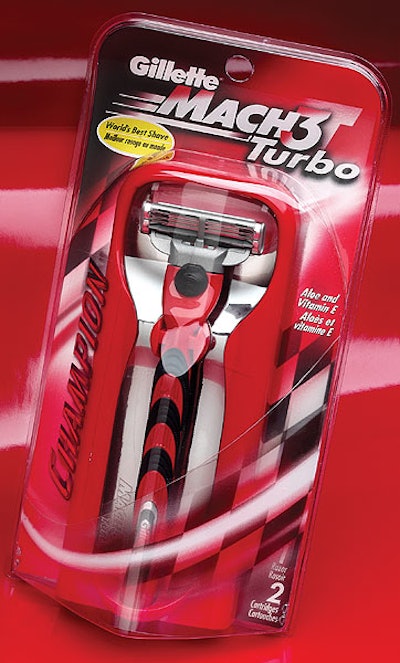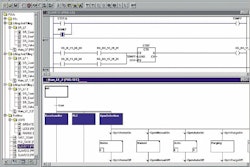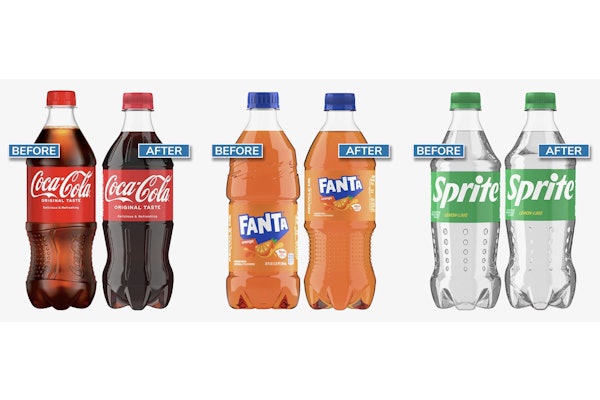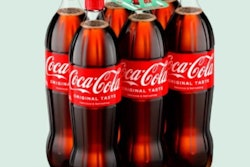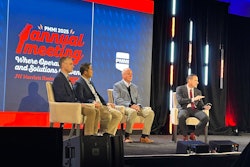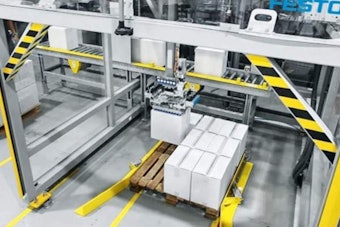One of Wal-Mart’s leading packaging influencers wants to set the record straight for brand marketers and packaging suppliers who fixate on “cracking the code” inside the nation’s No. 1 retailer. A code doesn’t exist, says Bob Connolly, executive vice president of marketing and consumer communications.
Successfully selling Wal-Mart requires packaging that simplifies life for both shopper and sales associate, Connolly says. When the approach focuses strictly on ingenuity, failure often results.
“Wal-Mart customers come in on a mission,” Connolly explains. “All they want is to have a safe, easy shopping experience.”
That experience can be summed up this way: Eighty percent of the time, the purchaser is a woman, even in men’s products. Upon spotting a particular brand, she spends no more than six seconds eyeing a product and then making the buying decision. She’s often in a hurry, and she despises delays caused by falling materials as she pulls product from a display.
Wal-Mart sales associates are on a mission built around speed and ease, too. In a company that rings up 130 million sales transactions each week, product turnover is swift. From a packaging perspective, their approach is “Wheel it in, open it up, it’s there,” Connolly says. That means packaging displays that set up quickly and intuitively, and that minimize labor costs as the displays sell down.
“As soon as you ask for more, you make it more likely Wal-Mart will back off,” Connolly says.
In this scenario, packaging can make or break a brand at Wal-Mart. Consider one estimate that losing Wal-Mart’s business can cost a brand more than 20% of its sales potential.
Two hot buttons
Connolly discusses two pivotal areas where both brand owners and their packaging materials suppliers can leverage packaging to gain a winning edge with Wal-Mart. In his view, it’s all about time and execution.
As a slew of marketing messages bombard consumers each day, time has become their new currency. They expect their shopping experience at Wal-Mart to help them sort it all out.
“Consumers are willing to accept a certain level of complexity. But you don’t want complexity thrown upon you,” Connolly observes. “Where we have the ability to control that complexity, there is a movement to do it. And that’s where brand managers and vendors come in.”
Wal-Mart shoppers expect packaging to take complexity out of their lives. They favor a communications hierarchy that helps them understand the nuances of a product and how it differs from competitors. That helps them save time by getting through the store faster, confident they’ve selected the right product, Connolly explains.
He describes simple communication as the foundation to a time-saving packaging strategy. It recognizes women as Wal-Mart’s primary shopper, even when the consumer of the product is a man.
Gillette has built a packaging program in razors that recognizes this shopping dynamic. One example is the men’s Mach 3 Turbo razor. Package graphics are decidedly male-oriented, featuring an auto-racing effect through gradients of red, black, and silver.
These visual elements set a man’s emotions racing. But there’s more at work on this package. When a woman picks up this package, she wants to know simply, what does the razor do? And what features make it different from other razors? A numbered list on the back panel of the blister card for the Mach 3 Turbo razor explains the function of each of the razor’s three blades, in English and Spanish.
Labels that marry form and function reduce buying stress and get consumers through a product category faster, Connolly says.
Wal-Mart’s other hot button is execution. Once again, simplicity is the key. Brand owners and packaging suppliers can score big points with Wal-Mart through packaging systems that get products from the loading dock to the sales floor fast, while minimizing the related labor costs.
Packaging waste inflates those costs. Wal-Mart favors displays that curtail both assembly time and excessive packaging. “We lack the time, skill, or the heart” to deal with the hassle factor of displays that generate significant waste as they sell down or that use high-tech components requiring special set-up knowledge, Connolly advises.
Wal-Mart is at the forefront of a movement to minimize the number of packaging “touches” that store personnel make when stocking shelves. It strongly favors putting primary packages in displays or display shippers that move directly to store shelves. Some marketers and packaging suppliers use the term “PDQ packaging” to describe this approach.
Good packaging execution takes yet another form at Wal-Mart. Forward-thinkers in package development who take the time to study a category and how consumers shop it can signal a new category through color and graphics.
Execution in repellants
Spectrum Brands, St. Louis, did just that with its Repel brand of insect repellant. It is achieving higher sales while receiving an unplanned bonus: Wal-Mart stocks the brand in its sporting goods department, away from a sea of competitors in household products.
Spectrum Brands studied the purchasing tendencies of its consumers and the product benefits that interest them most in insect repellant. The research determined that they view Repel products as an event-oriented purchase for occasions such as camping and fishing trips.
“They want a repellant that’s tough. We wanted to communicate a really strong, effective product through our packaging,” explains Angela Proctor, Repel’s product manager.
On Repel packaging, front-panel communication answers the two questions consumers wanted answered when selecting insect repellant. What events suit it best? And how long will it last?
Visually, the packaging’s heavy use of forest green and photography of the deep woods support the brand’s positioning as a “sportsmen’s formula.” That gives Repel a clearly different positioning from “around-the-house” competitors.
Repellant formulas vary little due to government regulation, but Repel’s formula is adjusted to last longer. The front panel of both the primary and secondary packaging communicates this benefit, which is expressed as a DEET rating. Repel’s DEET starts at about 20%, meaning it provides protection about four times longer than “household” repellants. The front panel boldly communicates this added value.
Spectrum Brands didn’t set out to create packaging with the goal of getting Repel merchandised separately from competitors in Wal-Mart stores. But Proctor says the brand has continually won over the retailer by emphasizing value and simplifying communication with consumers.
Five additional tips
Connolly notes five additional ways that brand owners and their suppliers can ingratiate themselves with buyers at Wal-Mart:
1. Shop the store. Although this sounds self-serving, lessons can be learned while making purchases in categories around a Wal-Mart store. This exercise offers an opportunity to learn about consumers’ exhilarations and frustrations during a shopping trip.
2. Bring a “friend” with differing interests. These will provide another perspective on packaging in the store.
3. Carry a calendar. Wal-Mart prefers packaging programs that respond to what Connolly describes as “the natural order of things.” In particular, be mindful of Wal-Mart’s three biggest shopping days each month. These are the 1st and 15th,, which are paydays, and the 3rd, the day when retirees receive their Social Security paychecks.
4. Use a Farmer’s Almanac. Weather and related events drive this retailer’s business. They should also drive manufacturers’ packaging programs.
5. Collaborate with competitors. Wal-Mart is less interested in pushing individual brands than driving an entire category.
See sidebar to this article: Selling a Wal-Mart buyer in 8 minutes or less
